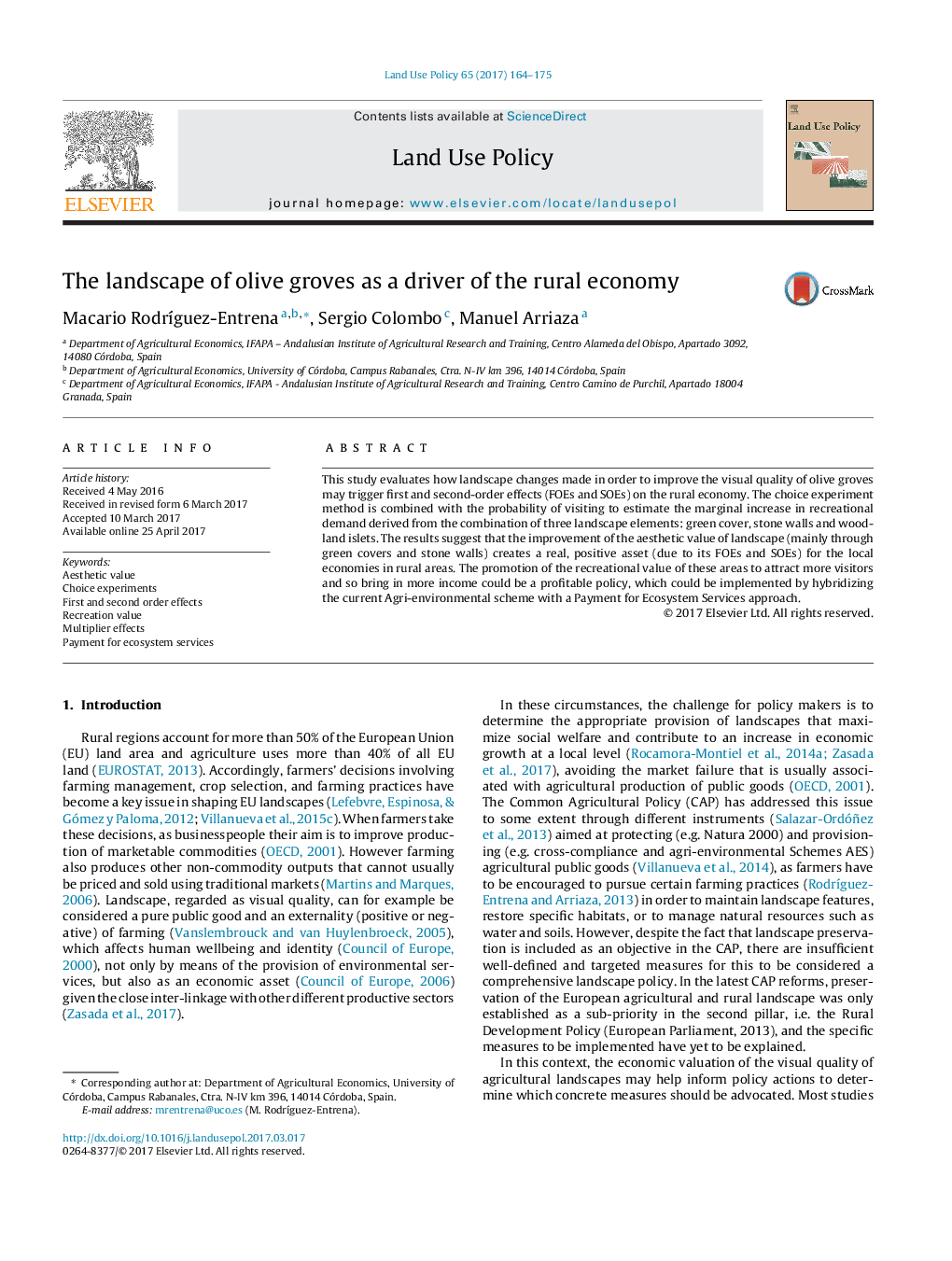| Article ID | Journal | Published Year | Pages | File Type |
|---|---|---|---|---|
| 6461139 | Land Use Policy | 2017 | 12 Pages |
â¢The improvement of the visual quality of olive grove landscape increases the recreational demand.â¢The use of green covers and stone walls are the most valued landscape changes in olive groves paths.â¢Second order effects are roughly three times more important than visitors' first order effects.â¢Agricultural landscape restoration embodies a non-negligible asset for the economic growth of rural areas.â¢Hybridizing the current AES scheme with a PES approach can be a profitable policy strategy.
This study evaluates how landscape changes made in order to improve the visual quality of olive groves may trigger first and second-order effects (FOEs and SOEs) on the rural economy. The choice experiment method is combined with the probability of visiting to estimate the marginal increase in recreational demand derived from the combination of three landscape elements: green cover, stone walls and woodland islets. The results suggest that the improvement of the aesthetic value of landscape (mainly through green covers and stone walls) creates a real, positive asset (due to its FOEs and SOEs) for the local economies in rural areas. The promotion of the recreational value of these areas to attract more visitors and so bring in more income could be a profitable policy, which could be implemented by hybridizing the current Agri-environmental scheme with a Payment for Ecosystem Services approach.
